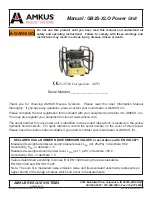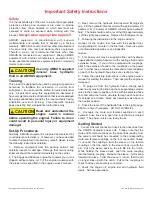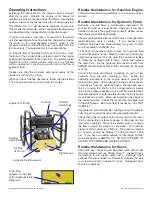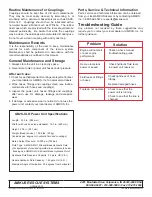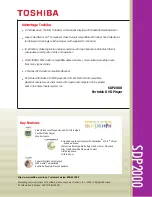
©Copyright Amkus Rescue Systems, Inc. 2010-2020
LAP-005 JUNE 22, 2020 Rev05
Routine Maintenance for Gasoline Engine
Follow the maintenance guidelines in the engine owner’s
manual.
Routine Maintenance for Hydraulic Pump
Normally, you will have a maintenance agreement for
your system with your local dealer. However, if you have
decided to service the equipment yourself, please review
the following instructions carefully.
Change hydraulic fluid after each 20 hours of tool operation
(approximately every 2 years). If you suspect your
hydraulic fluid has been contaminated in any way, contact
your local dealer or AMKUS, Inc.
To change the hydraulic fluid, remove the hydraulic fluid
reservoir fill plug/vent cap. Place the unit over a drain pan;
unscrew and remove the drain plug. Be careful not to lose
it! Allow the hydraulic fluid to drain. Clean and replace
the drain plug. Fill the hydraulic fluid reservoir with new
AMKUS mineral base hydraulic fluid. Replace the fill plug/
vent cap.
Connect the male and female couplings on each of the
hydraulic hose line sets, creating a loop. Follow the
operating instructions in the engine owner’s manual for
starting the engine. Then operate the engine at full speed.
To purge air from the hydraulic hoses, charge each hose
line by moving the knob on the corresponding selector
valve to the pressure position (in line with the selected hose
line) and allow the fluid to circulate through each hose line
for at least one minute. Move each selector valve back to
the neutral position. Check the level of the hydraulic fluid
in the sight gauge. Add more fluid if necessary. DO NOT
OVERFILL.
Uncouple the male and female couplings on each hydraulic
hose line set to open the loop that was created earlier.
Check the pressure output of the power unit at each hose
line by connecting a pressure gauge to the pressure line
(the male coupling). Move the selector valve to charge
the line to which the gauge is connected. The nominal
pressure of the system is 10,500 psi. The pressure reading
you receive should be between 10,000 psi and 11,000
psi. If you have a reading outside of that range, contact
your local dealer or AMKUS, Inc. DO NOT ATTEMPT TO
ADJUST THE PRESSURE RELIEF SETTING!
Routine Maintenance for Hoses
After each use, hoses should be wiped clean with a light
cleaning solvent such as Simple Green
®
. Inspect hoses
for damage to the rubber outer cover. Damage which
exposes the wire braided reinforcement subjects the wire
to corrosion and may weaken the hose. Damaged hoses
should be replaced.
Drain Plug
(located on the back
of the Hydraulic Fluid
Reservoir)
Fill Plug
Vent Cap
Fuel Cap
Selector
Valve Knob
Selector
Valve Knob
Hydraulic Fluid Reservoir
Sight Gauge
Engine Oil Fill Cap
Operating Instructions
Following the instructions in the engine owner’s manual,
start the engine. Operate the engine at full speed for
maximum rescue tool speed and performance. Use the idle
position only when the rescue tools are not being operated.
The GB2S-XLO is a simultaneous operation power unit.
This means that two tools can be connected simultaneously
and operated either independently or simultaneously.
In order to operate a tool that is connected to the power
unit, the appropriate hose line must be charged by moving
the knob on the corresponding selector valve to the
pressure position (in line with the hose line to which the tool
is connected). The selected tool is now operational.
To stop the flow of hydraulic fluid to each hose line, move
the knob of the corresponding selector valve to the neutral
position (perpendicular to the hose line). The selector valve
should be in the neutral position when you are finished
with an operation or anytime you wish to stop the flow of
hydraulic fluid.
Please note that the minimum safe bend radius of the
hoses is 4 inches (101.6 mm).
When you have finished operations, follow the instructions
in the engine owner’s manual to stop the engine.

